
loading

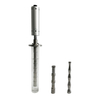

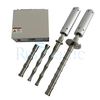

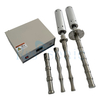

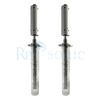

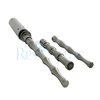


| Availability: | |
|---|---|
| Quantity: | |
RPS-SONO20
RPS-SONIC
| Place of Origin | China |
|---|---|
| Brand Name | RPS-SONIC |
| Certification | CE |
| Model Number | RPS-S20-2000 |
| Minimum Order Quantity | 1set |
| Price | negotiation |
| Packaging Details | Foam And Wood Box |
| Delivery Time | 3days |
| Payment Terms | T/T, Western Union, MoneyGram |
| Supply Ability | 200 sets per month |
Parameter
| Item | Parameter |
| Frequency | 20Khz |
| Power | 3000W |
| Capacity | 50L |
| Horn diameter | 50mm |
| Probe dip depth | 420mm |
Main functions of ultrasonic homogenizer
1. Dispersion and emulsification: Ultrasonic homogenizer can effectively mix oil and water phases, break oil droplets and water droplets, make them uniform and fine, and form a stable emulsion. It is often used in food, cosmetics, pharmaceutical and other industries where emulsification and dispersion are required.
2. Particle crushing and refinement: Through the action of ultrasound, solid particles or cell walls can be effectively broken, large particles can be broken down into small particles, and even refined to the nanometer level, which is suitable for the preparation of nanomaterials or drugs.
3. Cell wall breaking and extraction: Ultrasonic homogenizers are widely used in biological products, such as cell wall breaking to extract cell contents (such as plant extracts, enzyme extracts, algae, etc.), and the shear force of ultrasound is used to destroy the cell wall and release the effective ingredients.
4. Homogenization and mixing: In liquids, ultrasound can quickly and evenly mix different substances to ensure the uniform distribution of product ingredients. It is often used to prepare mixed solutions, suspensions, emulsions, etc.
Advantages of ultrasonic homogenizer
1. High efficiency: Ultrasonic homogenizer can achieve efficient homogenization effect in a short time, especially when dealing with high viscosity, complex formula or difficult to homogenize materials.
2. Precise control: The power, frequency and processing time of the ultrasonic homogenizer can be precisely adjusted. Users can optimize the homogenization process according to different sample requirements to ensure the best effect.
3. Wide applicability: It is suitable for homogenization of various forms of materials such as liquids, slurries, suspensions, emulsions, gels, etc., and is widely used in pharmaceutical, chemical, food, cosmetics, environmental protection and other industries.
4. Reduce chemical additives: In the emulsification or dispersion process, the ultrasonic homogenizer can reduce the use of traditional emulsifiers or chemical additives, reduce the chemical composition of the product, and improve the naturalness and safety of the product.
5. Energy saving and environmental protection: Compared with the traditional mechanical stirring method, the ultrasonic homogenizer uses ultrasonic energy for efficient homogenization, has low energy consumption and does not require large-scale mechanical equipment, and is easy to operate.
HIGH INTENSITY HORNS
High Intensity horns generate twice the amplitude (and higher intensities) when compared with standard horns of the same diameter.
Double (peak-to-peak) amplitude of the radiating face of the tip in micrometers on ultrasonic mechanical operating at output control setting 10.
Processing volumes may be doubled by using a magnetic stir bar.
Horns are made of titanium and are offered in 2 different versions.
Solid horns are constructed of a single piece of Titanium. Tapped horns are furnished with replaceable tips. Tips are available in solid titanium or in Sapphire coated titanium (Sapphire coating extends tip life.
Parameter
| Item | Parameter |
| Frequency | 20Khz |
| Power | 3000W |
| Capacity | 50L |
| Horn diameter | 50mm |
| Probe dip depth | 420mm |
Main functions of ultrasonic homogenizer
1. Dispersion and emulsification: Ultrasonic homogenizer can effectively mix oil and water phases, break oil droplets and water droplets, make them uniform and fine, and form a stable emulsion. It is often used in food, cosmetics, pharmaceutical and other industries where emulsification and dispersion are required.
2. Particle crushing and refinement: Through the action of ultrasound, solid particles or cell walls can be effectively broken, large particles can be broken down into small particles, and even refined to the nanometer level, which is suitable for the preparation of nanomaterials or drugs.
3. Cell wall breaking and extraction: Ultrasonic homogenizers are widely used in biological products, such as cell wall breaking to extract cell contents (such as plant extracts, enzyme extracts, algae, etc.), and the shear force of ultrasound is used to destroy the cell wall and release the effective ingredients.
4. Homogenization and mixing: In liquids, ultrasound can quickly and evenly mix different substances to ensure the uniform distribution of product ingredients. It is often used to prepare mixed solutions, suspensions, emulsions, etc.
Advantages of ultrasonic homogenizer
1. High efficiency: Ultrasonic homogenizer can achieve efficient homogenization effect in a short time, especially when dealing with high viscosity, complex formula or difficult to homogenize materials.
2. Precise control: The power, frequency and processing time of the ultrasonic homogenizer can be precisely adjusted. Users can optimize the homogenization process according to different sample requirements to ensure the best effect.
3. Wide applicability: It is suitable for homogenization of various forms of materials such as liquids, slurries, suspensions, emulsions, gels, etc., and is widely used in pharmaceutical, chemical, food, cosmetics, environmental protection and other industries.
4. Reduce chemical additives: In the emulsification or dispersion process, the ultrasonic homogenizer can reduce the use of traditional emulsifiers or chemical additives, reduce the chemical composition of the product, and improve the naturalness and safety of the product.
5. Energy saving and environmental protection: Compared with the traditional mechanical stirring method, the ultrasonic homogenizer uses ultrasonic energy for efficient homogenization, has low energy consumption and does not require large-scale mechanical equipment, and is easy to operate.
HIGH INTENSITY HORNS
High Intensity horns generate twice the amplitude (and higher intensities) when compared with standard horns of the same diameter.
Double (peak-to-peak) amplitude of the radiating face of the tip in micrometers on ultrasonic mechanical operating at output control setting 10.
Processing volumes may be doubled by using a magnetic stir bar.
Horns are made of titanium and are offered in 2 different versions.
Solid horns are constructed of a single piece of Titanium. Tapped horns are furnished with replaceable tips. Tips are available in solid titanium or in Sapphire coated titanium (Sapphire coating extends tip life.








Ultrasonic Welding Equipment Ultrasonic Welding Transducer Ultrasonic Welding Converter Ultrasonic Liquid Processor Ultrasonic Cutting Equipment Ultrasonic Spray Nozzles Ultrasonic Power Supply Ultrasonic Soldering Equipment Ultrasonic Welding Horn Ultrasonic Assisted Machining Ultrasonic Testing Equipment